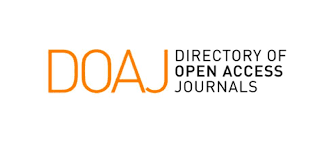Validation of Daily Rainfall Based on Global Satellite Mapping Of Precipitation (Gsmap) Data with Observation Data in The Bali Region
Abstract
Research has been done on the validation of rainfall based on Global Satellite Mapping of Precipitation GSMaP data with observation data in the Bali area. The method used in this research is Pearson correlation, root mean square error (RMSE), and mean square error (MBE). This study aims to validate GSMaP rainfall data with observations in the Bali area. In general, GSMaP rainfall data tends to have a smaller value than observation data, but has almost the same data pattern in each area with rainfall patterns that occur from November to March. The study shows a strong positive correlation value (> 0.5), where in the Ngurah Rai area the value of = 0.889 with =0.558 and = 0.061, in Negara the value of = 0.887 with = 0.595 and = 0.049, and in Denpasar area the value of = 0.879 dengan = 0.444 dan = 0.058. This shows that GSMaP satellite data is quite valid and can be used especially in 3 observation areas, namely Ngurah Rai, Negara, and Denpasar.
Downloads
References
[2] Yulianto and Sudibyakto., Kajian Dampak Variabilitas Curah Hujan Terhadap Produktivitas Padi Sawah Tadah Hujan di Kabupaten Magelang, 2012.
[3] B. Triatmodjo, Hidrologi Terapan. Yogyakarta, Beta offset Yogyakarta, 2013.
[4] S. Natadiredja, I. K. Sukarasa, and G. N. Sutapa, Validasi Curah Hujan Harian Berdasarkan Data Global Satellite Mapping of Precipitation (GSMAP) di Wilayah Bali Dan Nusa Tenggara. Jurnal Buletin Fisika., vol. 19, no. 1, 2018, pp. 12-15.
[5] J. R. McCollum, and R. R. Ferraro, Next generation of NOAA/NESDIS TMI, SSM/I, and
AMSR-E Microwave Land Rainfall Algorithms. Journal of Geophysical Research, vol. 108, no. 8, 2003, pp.7-16.
[6] N. Sugiartha, K. Ogawara, T. Tanaka, et al., Application of GSMaP Product and Rain Gauge Data for Monitoring Rainfall Condition of Flood Events in Indonesia. International Journal of Environment and Geosciences, vol. 1, no. 1, 2017, pp. 36-47.
[7] A. Mulyo, Pengantar Ilmu Kebumian, Pustaka Setia, Bandung, 2004, pp. 503-505.
[8] M. Mawardi, Rekayasa Konservasi Tanah dan Air, Yogyakarta, 2012.
[9] R. Prasetia, Buletin Iklim Bali. Di: Badan Meteorologi Klimatologi dan Geofisika Stasiun Klimatologi (ed). Jembrana, 2019.
[10] Satiadi, D, Characteristics of Rainfall in the Continent-Maritime Region: Study of the Origin of Intense Rainfall and Drought, Global Earth Observation of System (GEOSS) Asia- Pasific Symposium, Bali, 2010.
[11] A. Setiyoko, T. Osawa, and I. W. Nuarsa, Evaluation of GSMaP Precipitation Estimates Over Indonesia. International Journal of Environment and Geosciences, vol. 3, no. 1, 2019, pp. 26-43.
[12] M. R. Anwar, D. L. Liu, R. Farquharson, et al., Climate Change Impacts on Phenology and Yields of Five Broadacre Crops at Four Climatologically Distinct Locations in Australia, Australia, 2015, pp. 133-144.
[13] B. Lakitan, Dasar-Dasar Klimatologi, PT. Raja Grafindo Persada, Jakarta, 1994, pp. 96-97.
[14] M. Budi, 2019. Basic of Radar. Tersedia dari: http://mbd-geo.web.id/2019/09/11/basic-of-radar. [Diakses pada November 2019].
[15] R-Stats, 2019. Korelasi Pearson, Available from: https://www.rumusstatistik.com/2019/06/korela
sipearson [Diakses pada 23 November 2019].










